Mobility Control of Unmanned Aerial Vehicle as Communication Relay to Optimize Ground-to-Air Uplinks
Abstract
1. Introduction
1.1. Background
1.2. Related Work
1.3. Contribution
1.4. Structure
2. Problem Formulation and Method Framework
2.1. Relay Uav Mobility Control Problem
2.2. Mobility Control Framework
3. Position Prediction and Guidance Law
3.1. Kf-Based Position Prediction
3.2. Lgvf Guidance Law
4. Optimal Relay Position Generation with Unknown Channel Parameters
4.1. Channel Approximation
4.2. End-To-End Communication Scenario
| Algorithm 1 Mobility Control method for end-to-end communication |
| Require:, . |
| 1: for do |
| 2: Predict user positions at using Kalman Filter. |
| 3: Estimate uplink channel parameters with the approximately model defined in Equation (33) using the LSE algorithm, based on observations during time . |
| 4: . |
| 5: UAV flies towards during time interval with . |
| 6: end for |
4.3. Multi-Agent-Inter Communication Scenario
| Algorithm 2 Mobility Control method for multi-agent-inter communication |
| Require:, . |
| 1: for do |
| 2: Predict user positions at using Kalman Filter. |
| 3: Estimate uplink channel parameters with the approximately model defined in Equation (33) using the LSE algorithm, based on observations during time . |
| 4: . |
| 5: UAV flies towards during time interval with . |
| 6: end for |
5. Simulation Results and Analysis
5.1. Static Agents
5.2. Mobile Agents with Known Channel Parameter
5.3. Mobile Agents with Unknown Channel Parameters
6. Conclusions
Author Contributions
Funding
Acknowledgments
Conflicts of Interest
References
- Aljehani, M.; Inoue, M. Communication and autonomous control of multi-UAV system in disaster response tasks. In Proceedings of the 11th International Conference on Agent and Multi-agent Systems-Technologies and Application, Vilamoura, Portugal, 21–23 June 2017. [Google Scholar]
- Curry, J.A.; Masklanik, J.; Holland, G.; Pinto, J. Applications of aerosondes in arctic. Bull. Am. Meteorol. Soc. 2004, 85, 1855–1861. [Google Scholar] [CrossRef]
- Wagner, A.; Arkin, R. Multi-robot communication-sensitive reconnaissance. In Proceedings of the IEEE International Conference on Robotics and Automation, Paris, France, 31 May–4 June 2020. [Google Scholar]
- Yang, W.L.; Luo, L.; Deng, J.S. Optimization and improvement for multi-UAV cooperative reconnaissance mission planning problem. In Proceedings of the 11th International Computer Conference on Wavelet Active Media Technology and Information Processing (ICCWAMTIP), Chengdu, China, 19–21 December 2014. [Google Scholar]
- Casbeer, D.W.; Beard, R.W.; McLain, T.W. Forest fire monitoring with multiple small UAVs. In Proceedings of the American Control Conference, Portland, OR, USA, 8–10 June 2005. [Google Scholar]
- Jiang, F.; Swindlehurst, A.L. Optimization of UAV heading for the ground-to-air uplink. IEEE J. Sel. Areas Commun. 2012, 30, 993–1005. [Google Scholar] [CrossRef]
- Andrea, G. Wireless Communication; Cambridge University Press: Cambridge, UK, 2005. [Google Scholar]
- Kopeikin, A.; Ponda, S.S.; How, J.P. Control of communication networks for teams of UAVs. In Handbook of Unmanned Aerial Vehicles; Valavanis, K.P., Vachtsevanos, G.J., Eds.; Springer Science + Business Media Dordrecht: Dordrecht, The Netherlands, 2015; pp. 1619–1654. [Google Scholar]
- Mohamed, Y.; Kemal, A. Strategies and techniques for node placement in wireless sensor networks: A survey. Ad Hoc Netw. 2008, 6, 621–655. [Google Scholar]
- Rubin, I.; Zhang, R. Placement of UAVs as communication relays aiding mobile ad hoc wireless networks. In Proceedings of the IEEE Military Communication Conference, Atlantic City, NJ, USA, 17–20 October 2005. [Google Scholar]
- Mozaffari, M.; Saad, W.; Bennis, M.; Debbah, M. Mobile unmanned aerial vehicles (UAVs) for energy-efficient Internet of Things communications. IEEE Trans. Wirel. Commun. 2017, 16, 7574–7589. [Google Scholar] [CrossRef]
- Yan, Y.; Mostofi, Y. Robotic router formation in realistic communication environments. IEEE Trans. Robot. 2012, 28, 810–827. [Google Scholar] [CrossRef]
- Mostofi, Y.; Malmirchegini, M.; Ghaffarkhah, A. Estimation of communication signal strength in robotic networks. In Proceedings of the 2010 IEEE International Conference on Robotics and Automation, Anchorage, AK, USA, 4–8 May 2010. [Google Scholar]
- Ono, F.; Ochiai, H.; Miura, R. A wireless relay network based on unmanned aircraft system with rate optimization. IEEE Trans. Wirel. Commun. 2016, 15, 7699–7708. [Google Scholar] [CrossRef]
- Wang, H.; Ren, G.; Chen, J.; Ding, G.; Yang, Y. Unmanned Aerial Vehicle-aided communications: Joint power and trajectory optimization. IEEE Wirel. Commun. Lett. 2018, 7, 522–525. [Google Scholar]
- Krijestorac, E.; Hanna, S.; Cabric, D. UAV access point placement for connectivity to a user with unknown location using deep RL. arXiv 2019, arXiv:1907.03912v2. [Google Scholar]
- Sharma, P.K.; Kim, D.I. Random 3D mobile UAV networks: Mobility modeling and coverage probability. IEEE Trans. Wirel. Commun. 2019, 18, 2527–2538. [Google Scholar] [CrossRef]
- Cetin, O.; Zagli, I. Continuous airborne communication relay approach using unmanned aerial vehicles. J. Intell. Robot. Syst. 2012, 65, 549–562. [Google Scholar] [CrossRef]
- Han, Z.; Swindlehurst, A.L.; Ray, L.K.J. Optimization of MANET connectivity via smart deployment/movement of unmanned aerial vehicle. IEEE Trans. Veh. Technol. 2009, 58, 3533–3546. [Google Scholar] [CrossRef]
- Yong, Z.; Rui, Z.; Teng, J.L. Throughput maximization for UAV-enabled mobile relaying systems. IEEE Trans. Commun. 2016, 64, 4982–4996. [Google Scholar]
- Zhang, J.W.; Zeng, Y.; Zhang, R. UAV-Enabled Radio Access Network - Multi-Mode Communication and Trajectory Design. IEEE Trans. Signal Process. 2018, 1–15. [Google Scholar] [CrossRef]
- Chamseddine, A.; Akhrif, O.; Arcand, G.C.; Gagnon, F.; Couillard, D. Communication relay for multiground units with unmanned aerial vehicles using only signal strength and angle of arrival. IEEE Trans. Control Syst. Technol. 2017, 25, 286–293. [Google Scholar] [CrossRef]
- Zhan, P.C.; Yu, K.; Swindlerhurst, A.L. Wireless relay communications with unmanned aerial vehicles: Performance and optimization. IEEE Trans. Aerosp. Electron. Syst. 2011, 47, 2068–2085. [Google Scholar] [CrossRef]
- Zhan, P.C.; Yu, K.; Swindlerhurst, A.L. Wireless relay communications using an unmanned aerial vehicle. In Proceedings of the IEEE 7th Workshop on Signal Processing Advances in Wireless Communication, Cannes, France, 2–5 July 2006. [Google Scholar]
- Wu, G.F.; Gao, X.G.; Fu, X.W.; Wan, K.F.; Di, R.H. Mobility control of unmanned aerial vehicle as communication relay in airborne multi-user systems. Chin. J. Aeronaut. 2019, 32, 1520–1529. [Google Scholar] [CrossRef]
- Bor-Yaliniz, R.I.; El-Keyi, A.; Yanikomeroglu, H. Efficient 3-D placement of an aerial base station in next generation cellular networks. In Proceedings of the IEEE international conference on communication (ICC), Kuala Lumpur, Malaysia, 23–27 May 2016. [Google Scholar]
- Mozaffari, M.; Saad, W.; Bennis, M.; Debbah, M. Unmanned aerial vehicle with underlaid device-to-device communications: Performance and tradeoffs. IEEE Trans. Wirel. Commun. 2016, 15, 3949–3963. [Google Scholar] [CrossRef]
- Michailidis, E.T.; Nomikos, N.; Bithas, P.S.; Vouyioukas, D.; Kanatas, A.G. Optimal 3-D aerial relay placement for multi-user MIMO communications. Trans. Aerosp. Electron. Syst. 2019, 55, 3218–3229. [Google Scholar] [CrossRef]
- Ladosz, P.; Oh, H.; Zheng, G.; Chen, W.H. A hybrid approach of learning and model-based channel prediction for communication relay UAVs in dynamic urban environments. IEEE Robot. Autom. Lett. 2016, 4, 2370–2377. [Google Scholar] [CrossRef]
- Dixon, C.; Frew, E.W. Decentralized extremum-seeking control of nonholonomic vehicles to form a communication chain. In Advances in Cooperative Control and Optimization; Pardalos, P.M., Murphey, R., Grundel, D., Hirsch, M.J., Eds.; Springer: Heidelberg/Berlin, Germany, 2007; pp. 311–322. [Google Scholar]
- Dixon, C. Controlled Mobility of Unmanned Aircraft Chains to Optimize Network Capacity in Realistic Communication Environments. Ph.D. Thesis, University of Colorado, Boulder, CO, USA, 2010. [Google Scholar]
- Dixon, C.; Frew, E.W. Optimizing cascade chains of unmanned aircraft acting as communication relays. IEEE J. Sel. Areas Commun. 2012, 30, 883–898. [Google Scholar] [CrossRef]
- Geiger, B.R.; Horn, J.F.; Delullo, A.M.; Long, L.N. Optimal path planning of UAVs using direct collocation with nonlinear programming. In Proceedings of the AIAA Guidance, Navigation, and Control Conference and Exhibit, Keystone, CO, USA, 21–24 August 2006. [Google Scholar]
- Wu, J.F.; Wang, H.L.; Li, N.; Yao, P.; Huang, Y.; Su, Z.K. Distributed trajectory optimization for multiple solar-powered UAVs target tracking in urban environment by adaptive grasshopper optimization algorithm. Aerosp. Sci. Technol. 2017, 70, 497–510. [Google Scholar] [CrossRef]
- Brown, T.X.; Argrow, B.; Dixon, C.; Doshi, S. Ad hoc UAV ground network (AUGNet). In Proceedings of the AIAA 3rd “Unmmaned Unlimited” Technical Conference, Workshop and Exhibit, Chicago, IL, USA, 20–23 September 2004. [Google Scholar]
- Richard, M.G. Cooperative Control of Distributed Autonomous Systems With Applications to Wireless Sensor Networks. Ph.D. Thesis, Naval Postgraduate School, Monterey, CA, USA, 2009. [Google Scholar]
- Zhai, G.; Bi, X.Z.; Zhao, H.Y.; Liang, B. Non-cooperative maneuvering spacecraft tracking via a variable structure estimator. Aerosp. Sci. Technol. 2018, 79, 352–363. [Google Scholar]
- Lawrence, D.A.; Frew, E.W.; Pisano, W. Lyapunov guidance vector fields for autonomous unmanned aircraft flight control. J. Guid. Control Dyn. 2008, 31, 1220–1232. [Google Scholar] [CrossRef]
- Frew, E.W.; Lawrence, D.A.; Morris, S. Coordinated standoff tracking of moving targets using Lyapunov guidance vector fields. J. Guid. Control Dyn. 2008, 31, 290–306. [Google Scholar] [CrossRef]
- Hourani, A.; Kandeepan, S.J. Modeling air-to-ground path loss for low altitude platforms in urban environments. In Proceedings of the IEEE Global Telecommunication Conference, Austin, TX, USA, 8–12 December 2014. [Google Scholar]
- Holis, J.; Pechac, P. Elevation dependent shadowing model for mobile communication via high altitude platforms in build-up areas. IEEE Trans. Antennas Propag. 2008, 56, 1078–1084. [Google Scholar] [CrossRef]
- Hourani, A.; Kandeepan, S.; Larder, S. Optimal LAP altitude for maximum coverage. IEEE Wirel. Commun. Lett. 2014, 3, 569–572. [Google Scholar] [CrossRef]
- Wan, Y.; Zhou, Y.; Fu, S.L. A smooth-turn mobility model for airborne networks. IEEE Trans. Veh. Technol. 2013, 62, 3359–3370. [Google Scholar] [CrossRef]
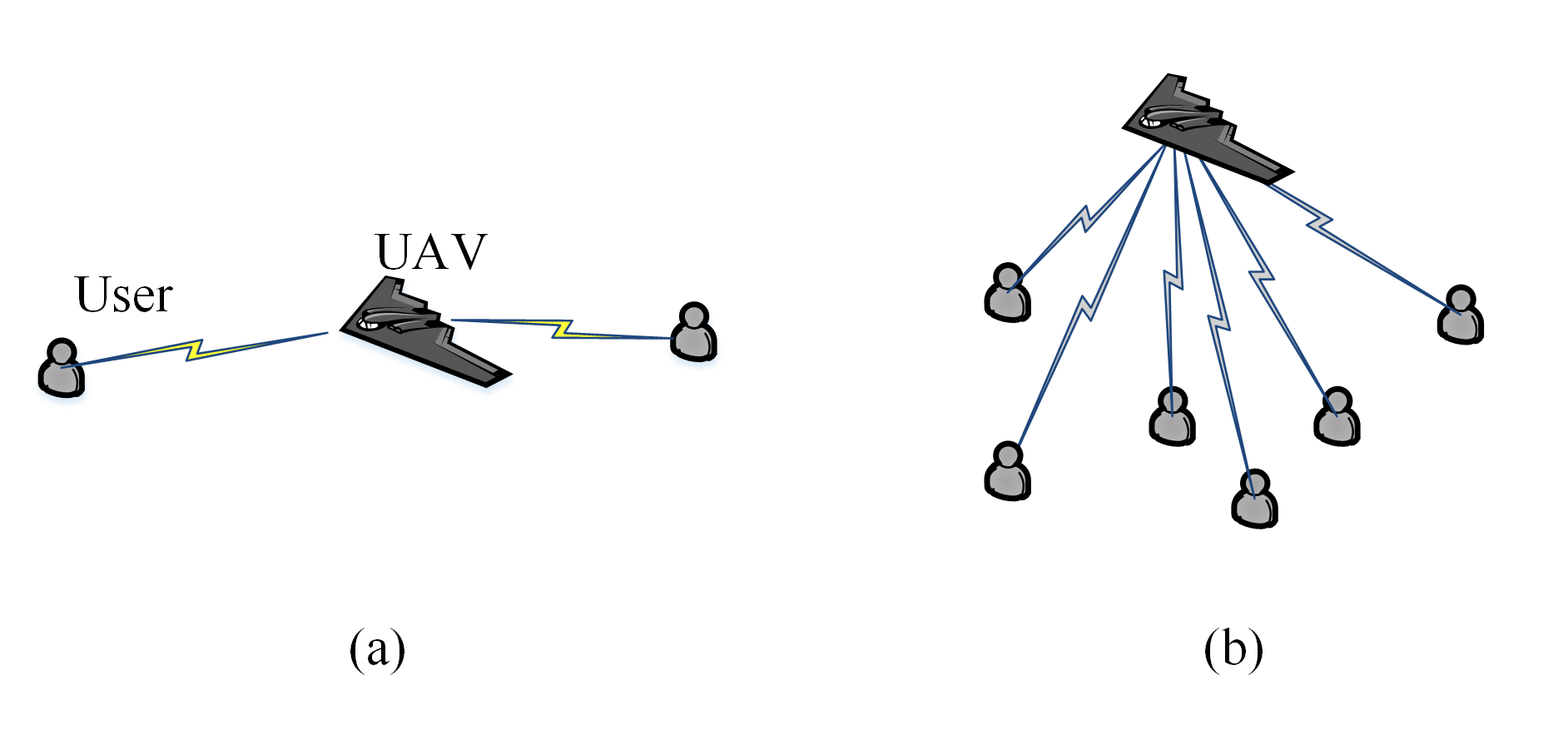

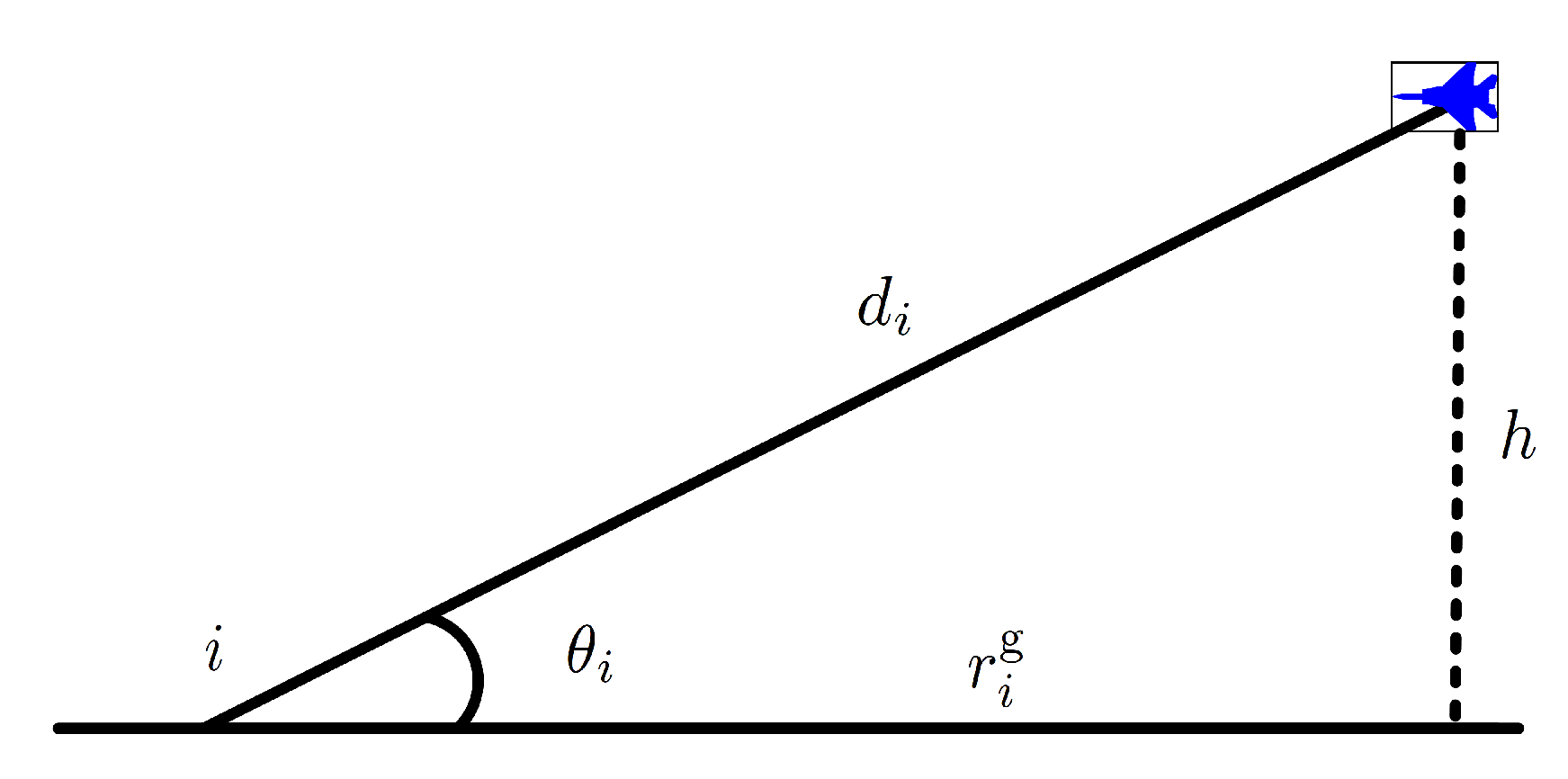
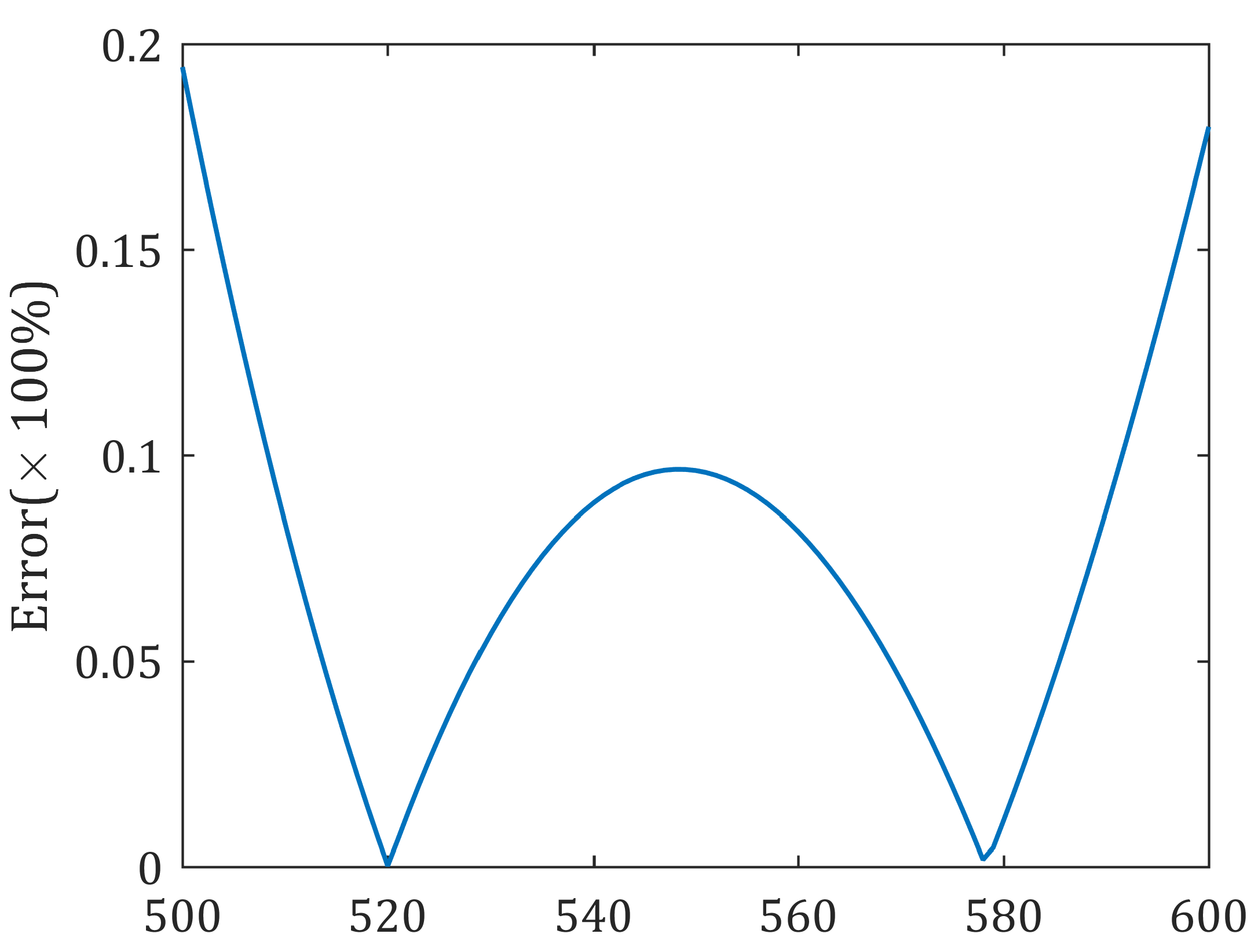
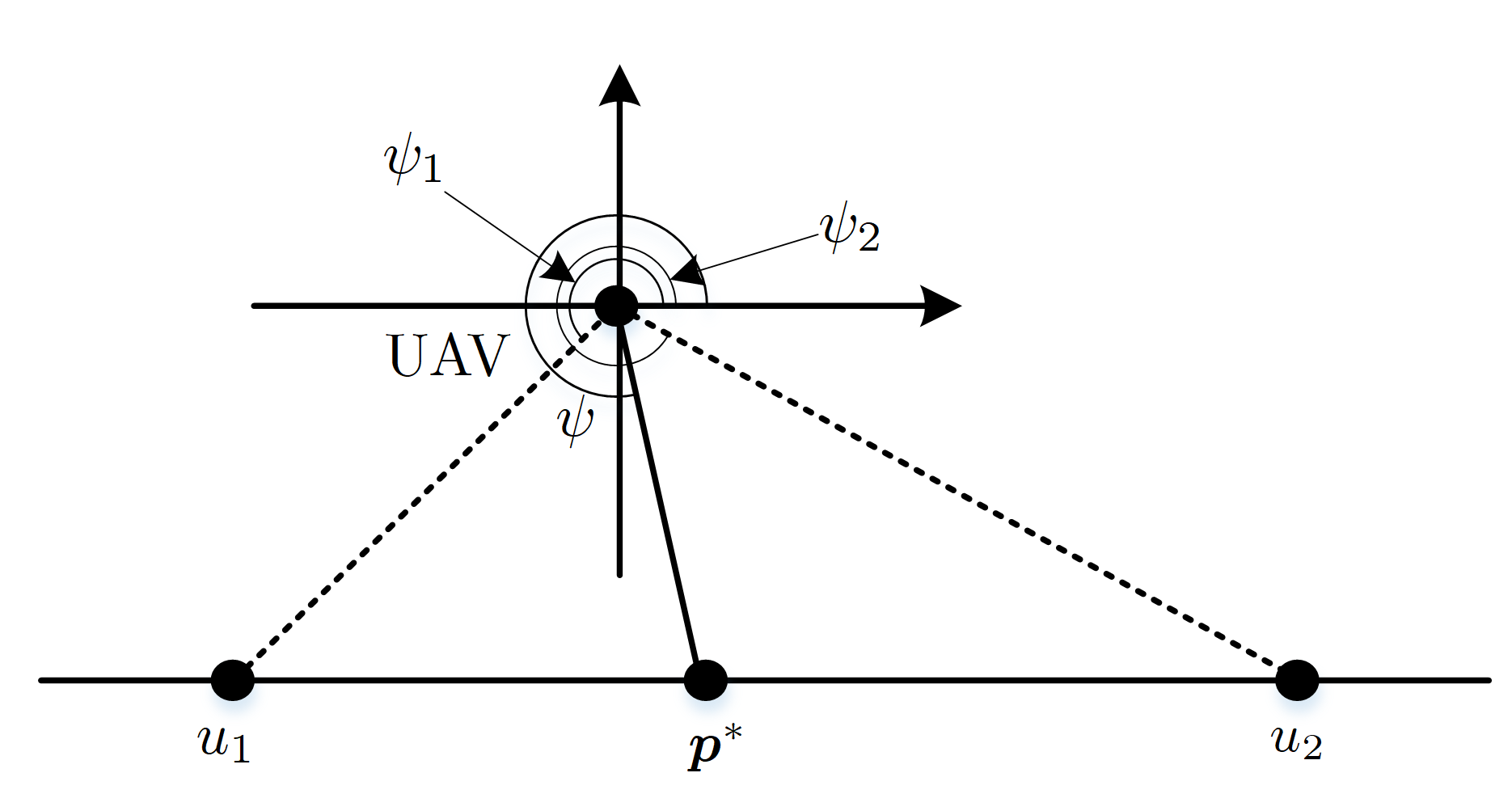
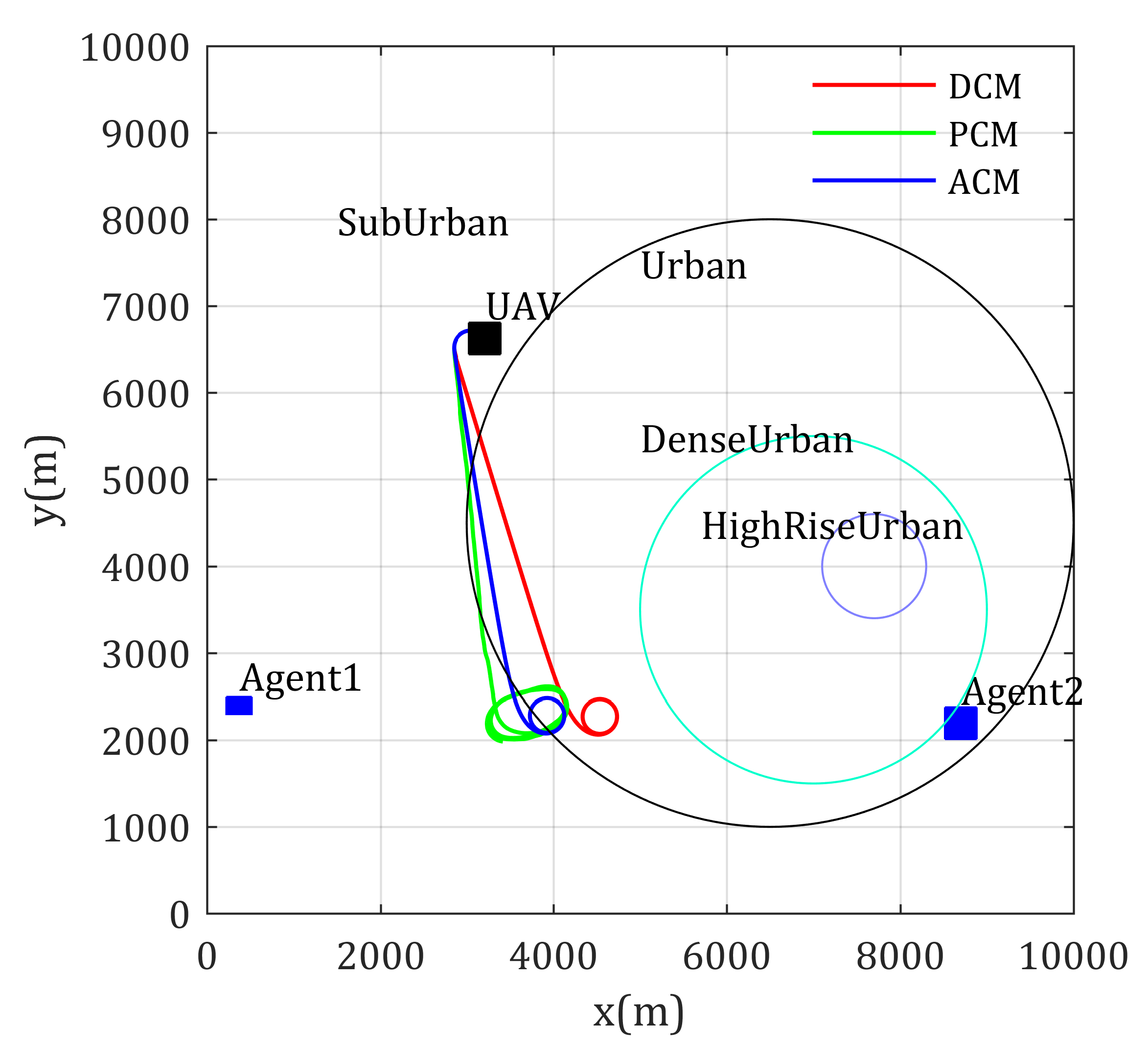
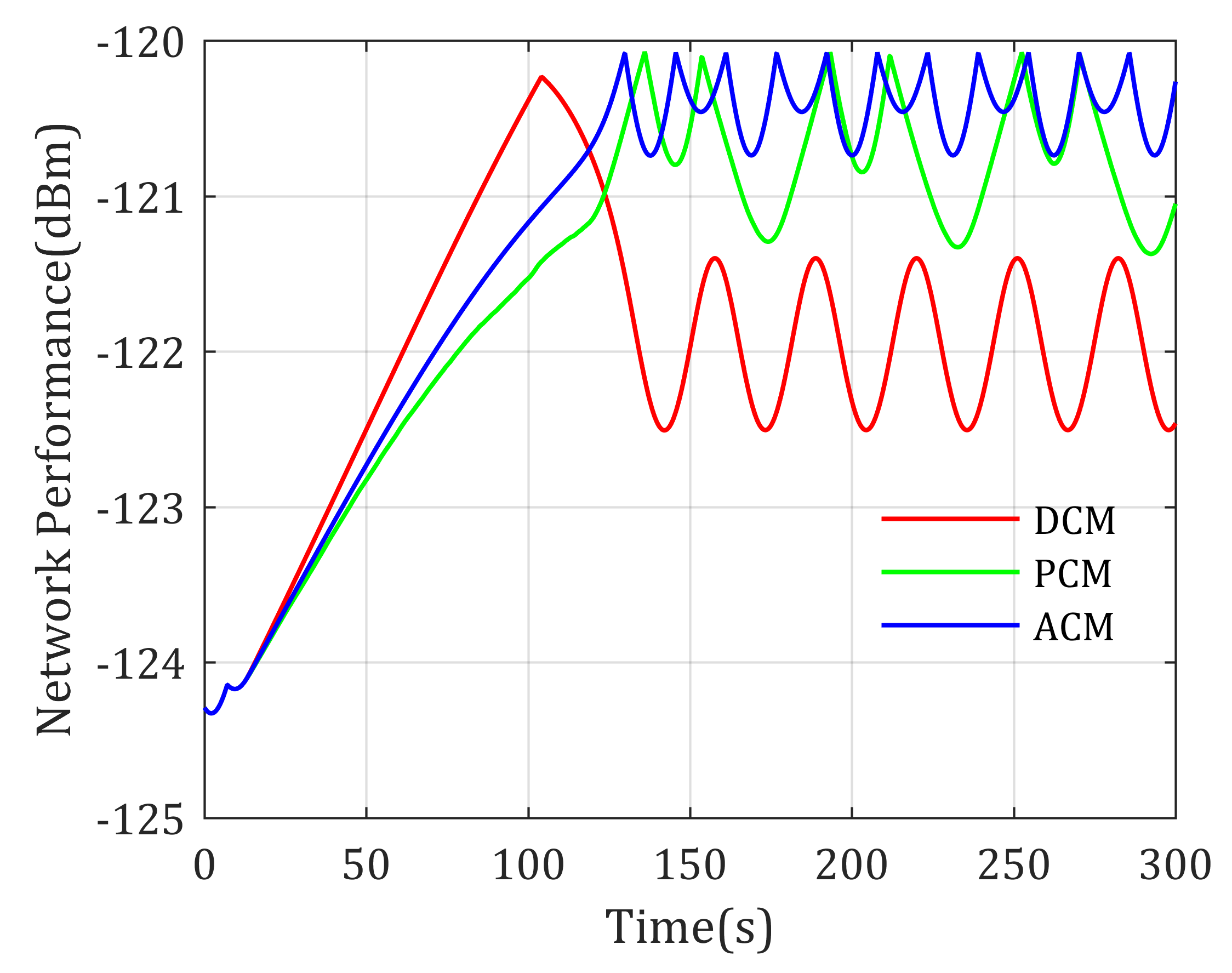
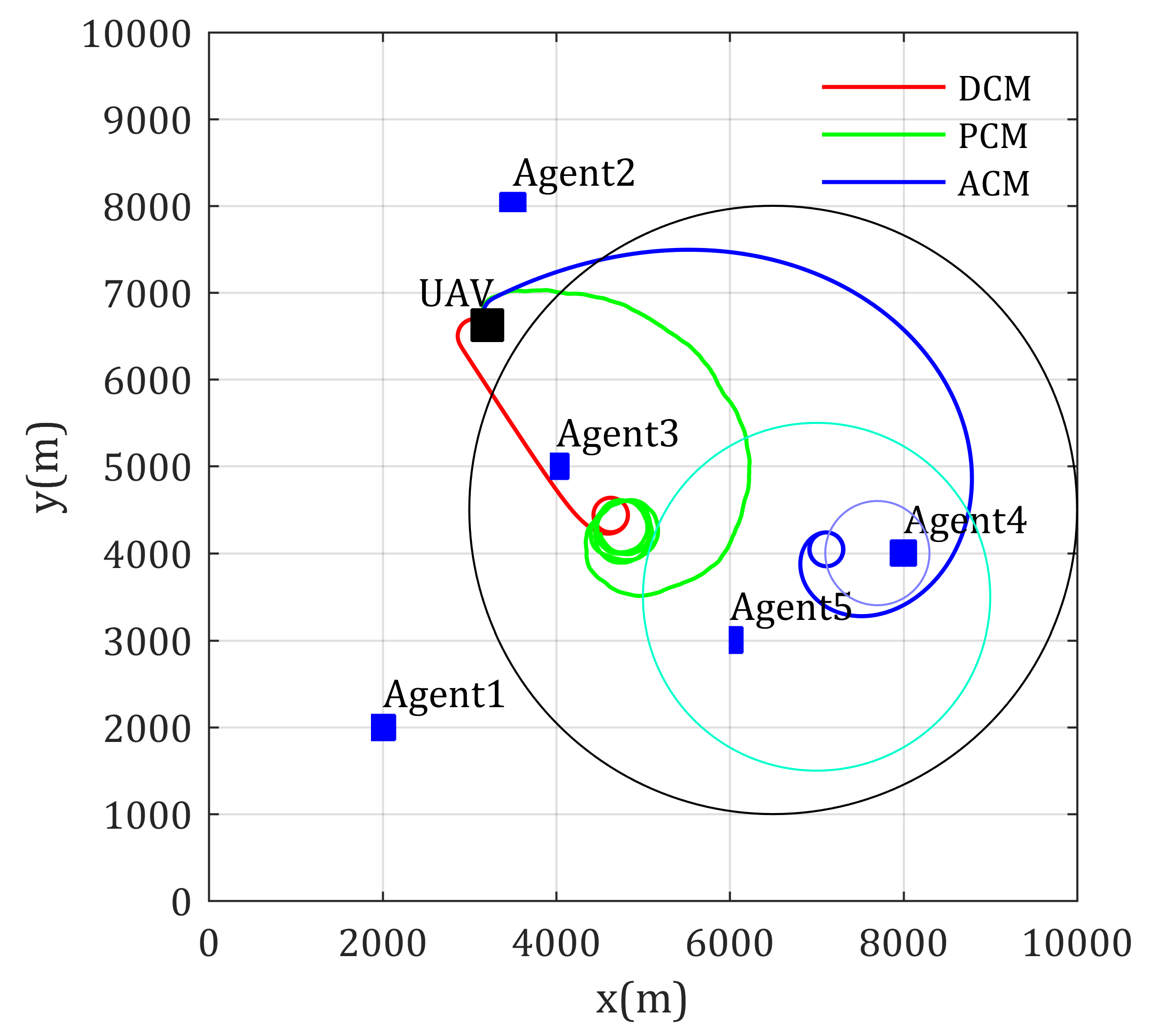

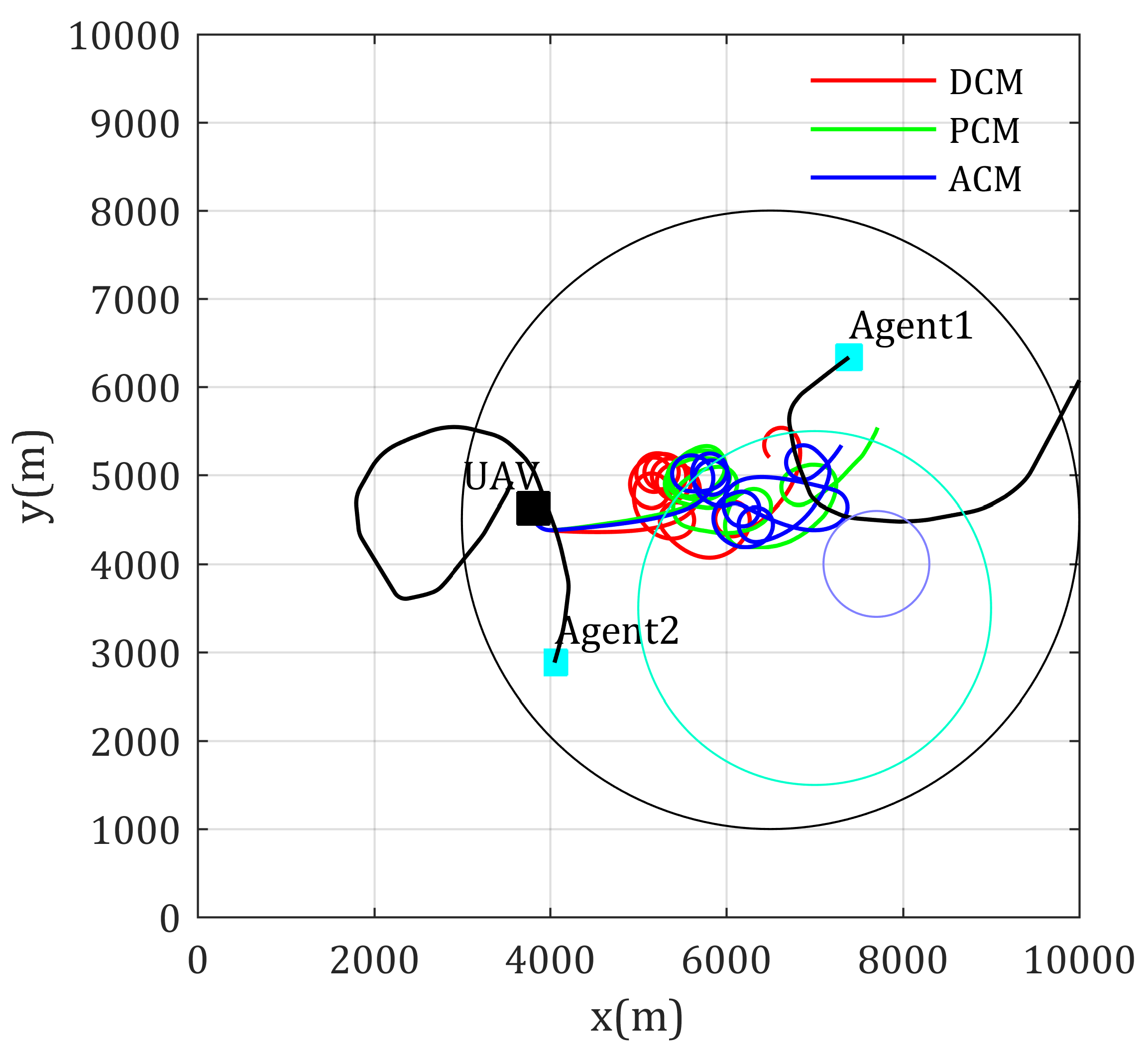
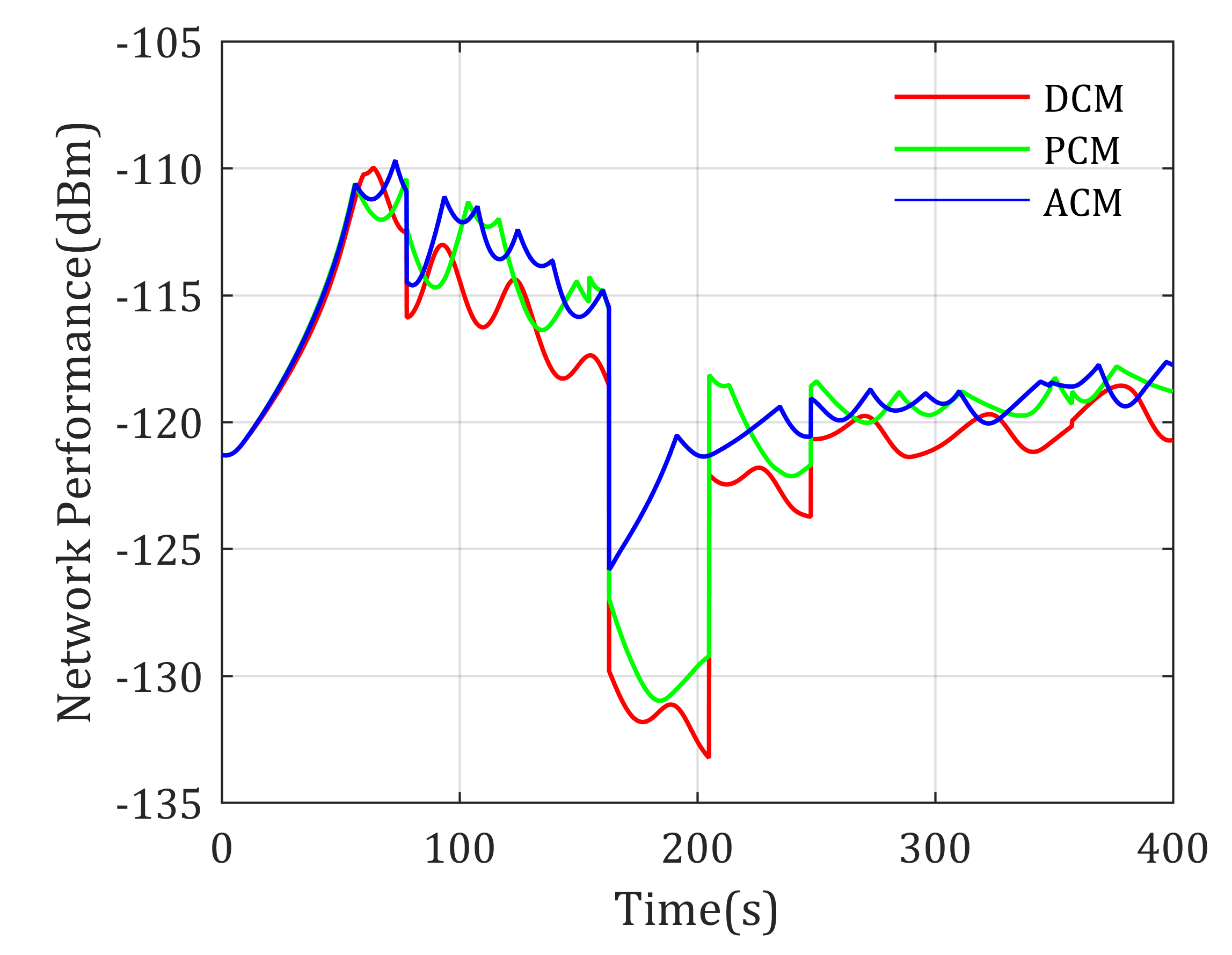
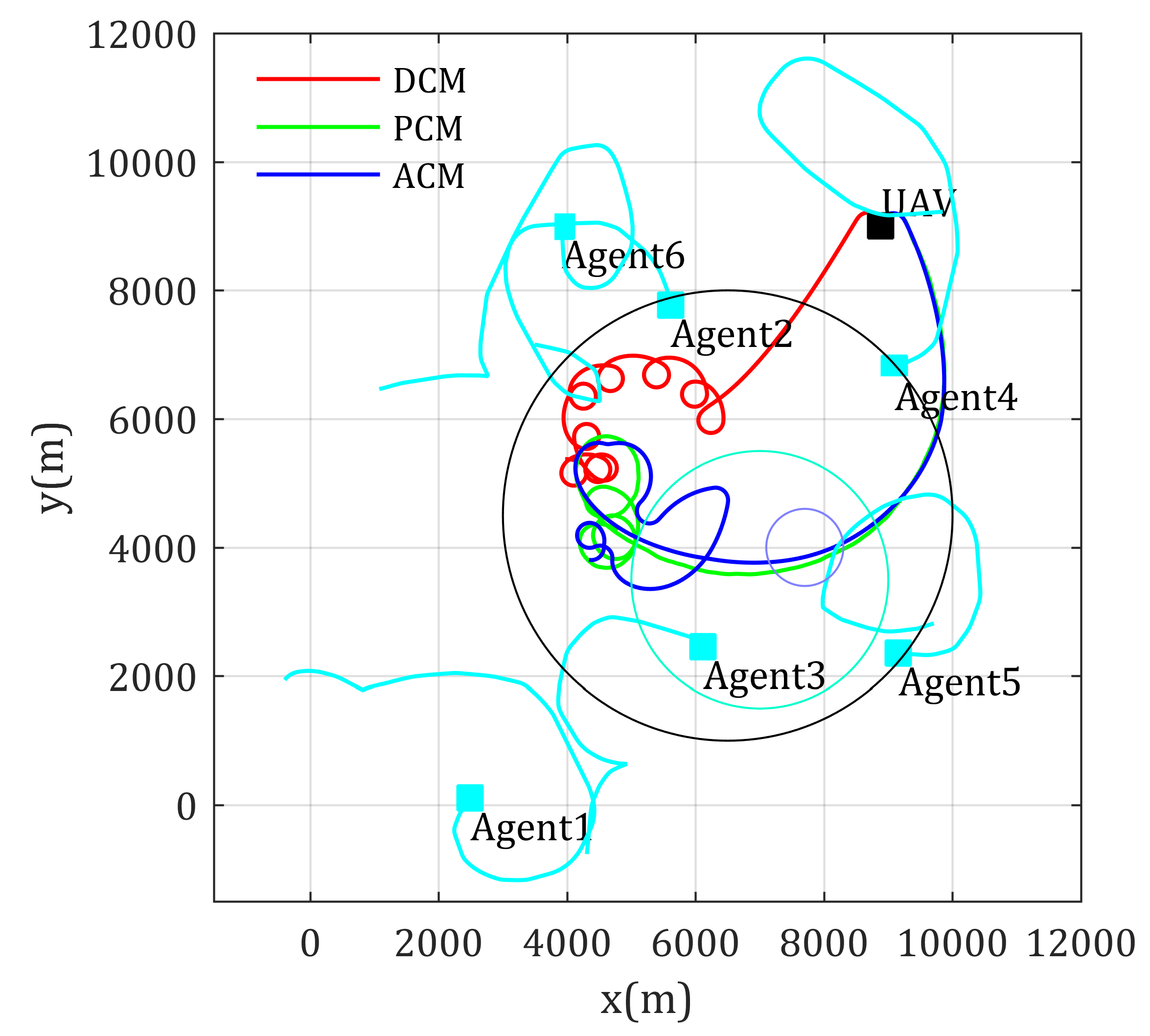
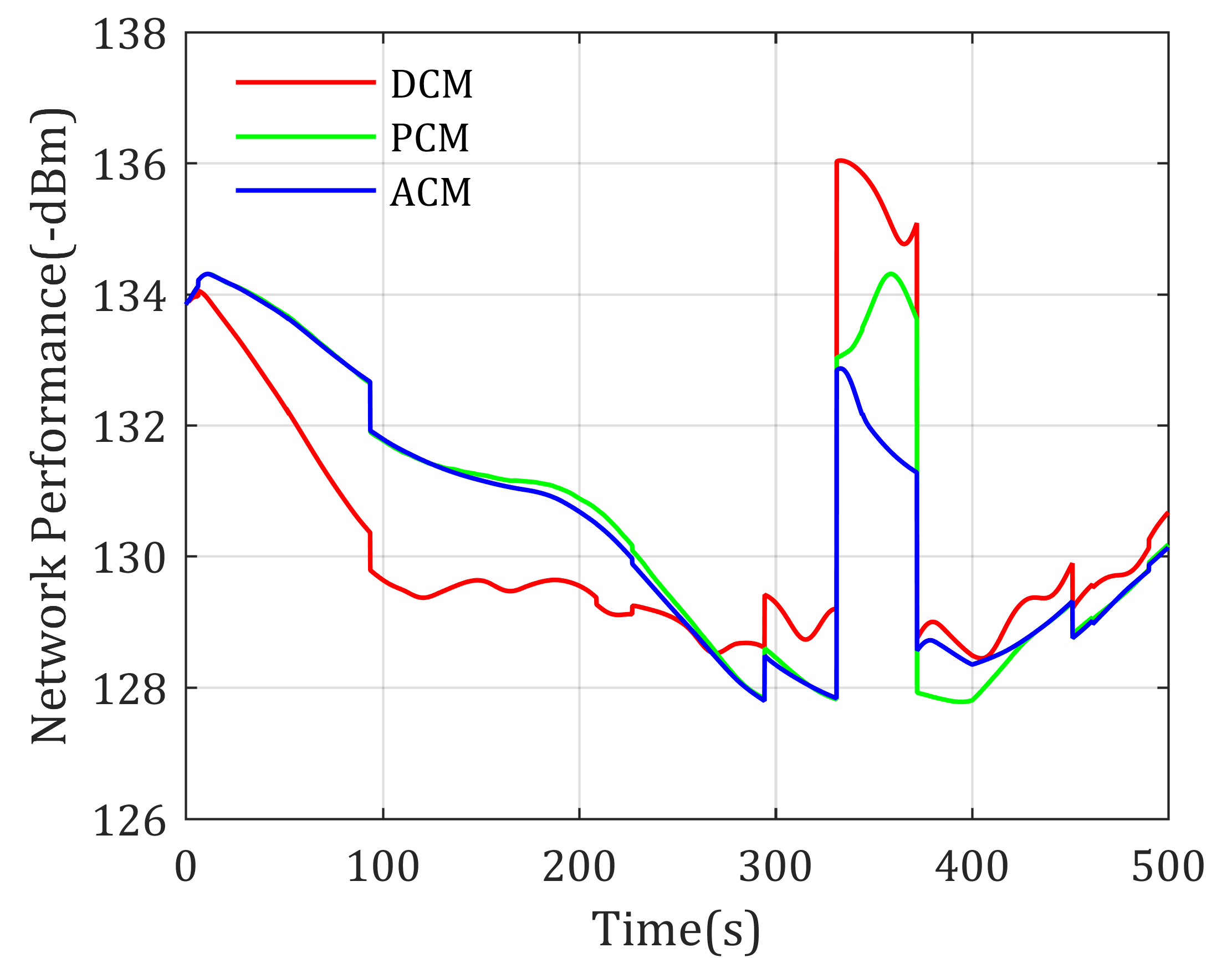


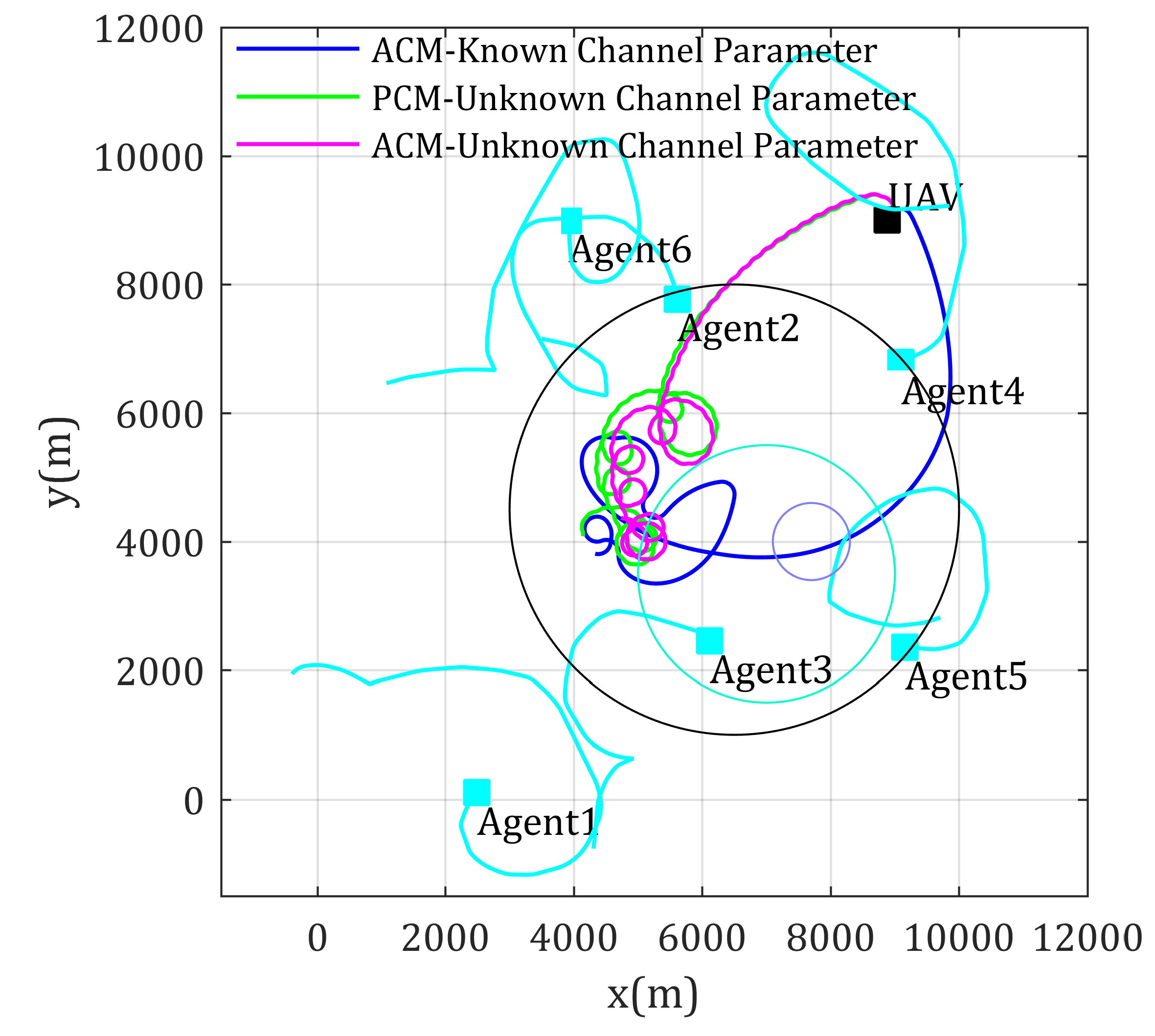

| Environment | Coverage Center | Coverage Radius (m) | |
|---|---|---|---|
| X (m) | Y (m) | ||
| Sub-Urban | 5000 | 5000 | 10,000 |
| Urban | 6500 | 4500 | 3500 |
| Dense-Urban | 7000 | 3500 | 2000 |
| High-Rise-Urban | 7700 | 4000 | 600 |
| Channel Parameters | Sub-Urban | Urban | Dense-Urban | High-Rise-Urban |
|---|---|---|---|---|
| 0.1 | 0.3 | 0.5 | 0.5 | |
| 750 | 500 | 300 | 300 | |
| 8 | 5 | 20 | 50 | |
| C | 4.88 | 9.61 | 12.08 | 27.23 |
| B | 0.43 | 0.16 | 0.11 | 0.08 |
| 0.1 | 1.0 | 1.6 | 2.3 | |
| 21 | 20 | 23 | 34 |
© 2020 by the authors. Licensee MDPI, Basel, Switzerland. This article is an open access article distributed under the terms and conditions of the Creative Commons Attribution (CC BY) license (http://creativecommons.org/licenses/by/4.0/).
Share and Cite
Wu, G.; Gao, X.; Wan, K. Mobility Control of Unmanned Aerial Vehicle as Communication Relay to Optimize Ground-to-Air Uplinks. Sensors 2020, 20, 2332. https://doi.org/10.3390/s20082332
Wu G, Gao X, Wan K. Mobility Control of Unmanned Aerial Vehicle as Communication Relay to Optimize Ground-to-Air Uplinks. Sensors. 2020; 20(8):2332. https://doi.org/10.3390/s20082332
Chicago/Turabian StyleWu, Gaofeng, Xiaoguang Gao, and Kaifang Wan. 2020. "Mobility Control of Unmanned Aerial Vehicle as Communication Relay to Optimize Ground-to-Air Uplinks" Sensors 20, no. 8: 2332. https://doi.org/10.3390/s20082332
APA StyleWu, G., Gao, X., & Wan, K. (2020). Mobility Control of Unmanned Aerial Vehicle as Communication Relay to Optimize Ground-to-Air Uplinks. Sensors, 20(8), 2332. https://doi.org/10.3390/s20082332






